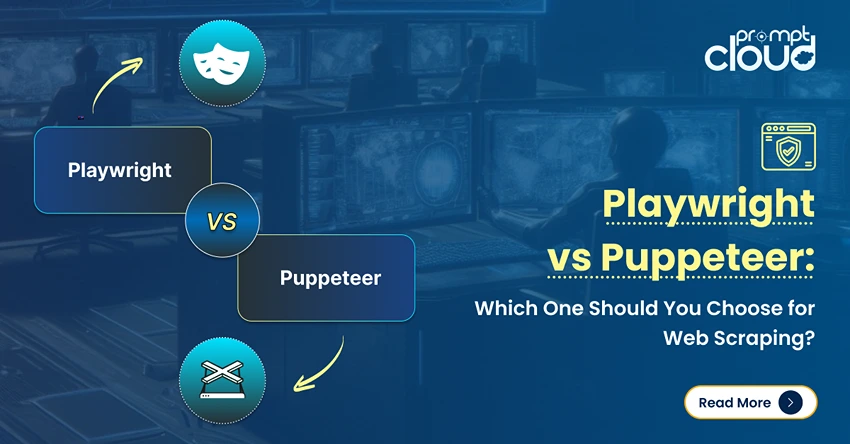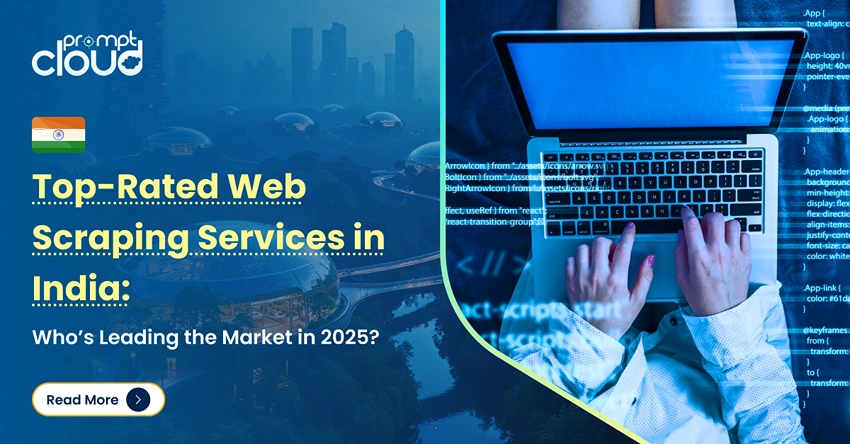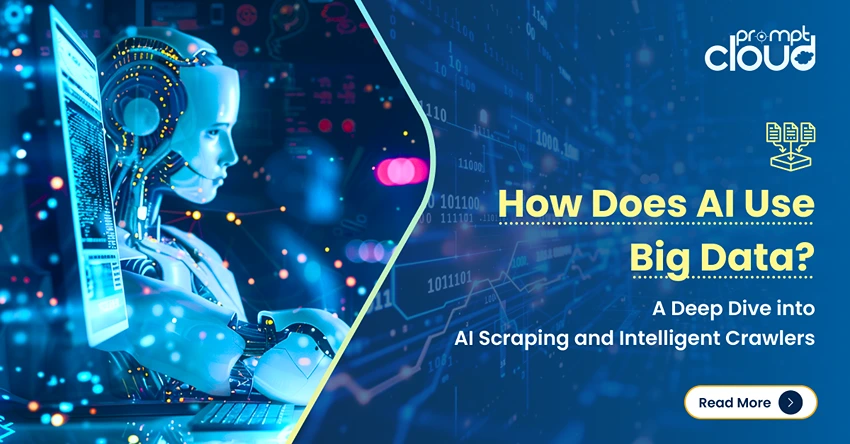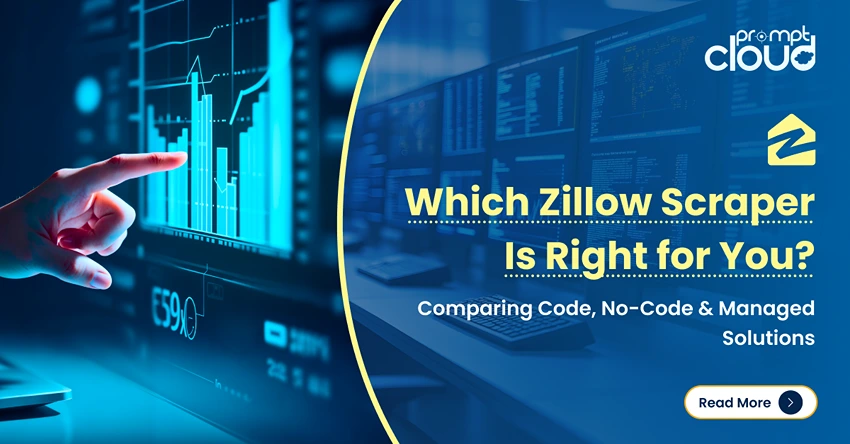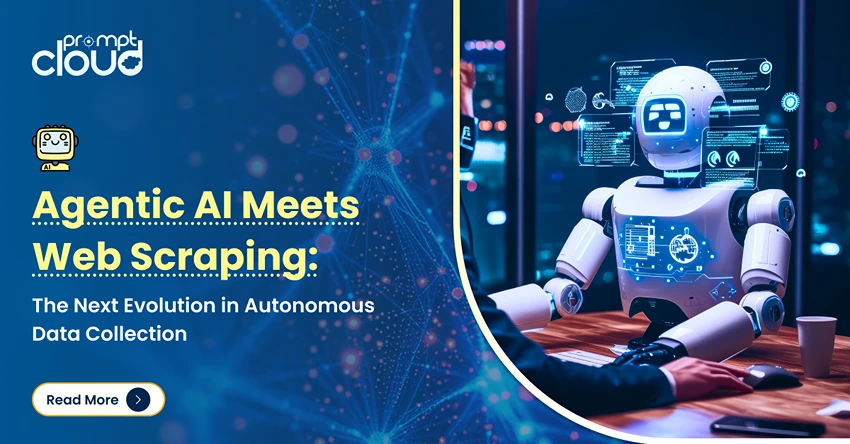Web Scraping has been the talk of the tech world for quite some time. More and more companies are trying to crawl data from the web using intelligent bots to speed up the process. There has also been a growth of DaaS (Data as a Service) providers like PromptCloud, who are offering their services to businesses that need their custom web-scraped data in a plug and play format, based on their specifications. However, we know that companies (especially the bigger ones) are resistant to change, and keep following the same practices that they have been following. But we have seen that companies that fail to change with time, end up falling, and that statement is most evident today, where technological changes have to be adopted to not be left behind.
Be it Uber decreasing profits of cab companies, or Amazon causing loss of business for brick and mortar stores; we have seen that tech or even non-tech companies/businesses which do not adapt to changes or don’t pick up latest practices end up getting wiped out. So coming to the point, web scraping has also not been adopted by many companies due to the apprehension related to setting up of a web scraping engine as well as absorbing the results. But all the companies who have not used it in the previous year ended up not using a lot of data available openly on the web, that could have been utilized to grow their businesses. This is the data that we’ll be discussing- the data that you left on the table in 2018.
We decided to separate the data that was left lying on the table, by sectors, data types, and technologies that could have been implemented using the data.
The Sectors that you missed out on:
Web scraped data is used by almost every tech and non-tech business today and so we decided to highlight the top sectors in which they are used.
-
E-commerce
E-commerce is one of the top users of web-scraping technology due to the need for maintaining prices that are on par with competitors and since the prices on most of the big sites change every hour, there is a need for real-time web scraping in this field to remain viable. Other than price scraping, reviews, product details, and product images are also scraped from e-commerce sites. The product details and images are used by newer e-commerce sites to build up their product list, whereas the reviews are used for various purposes like sentiment analysis to decide which products would be better to list on a website.
-
Job listing websites
Connecting a job seeker to a company with openings is a challenge that is much easier solved with the use of technology. Most big companies (most of the Fortune 500) advertise their openings on their Careers page, while others have advertisements on the hundreds of job posting websites throughout the world. If you’re in search of job data, JobsPikr can fetch you job-listings based on a number of factors, like location, job title, description, job type, as well as keywords present in the job description.
-
Hotel/travel bookings
With the growth of the travel sector, and more and more people wanting to go to lesser visited destinations, there’s a need for companies that can share a comprehensive list of places to stay in these locations, that includes homestays, hotels, hostels, and more. To prepare and share such a list with customers, companies have to make use of web-scraping, not only to crawl data about commercial establishments from hotel and hostel listing websites, but also to crawl data about homestays or establishments that let out a room or two to backpackers.
-
Flight booking/price estimator
Flight prices fluctuate daily and the number of airlines and routes also keep changing. In such a scenario, scraping this data and using historical data to build an estimator to help your customers can boost you to the forefront in the flight booking service. Price forecasting is a service that needs a lot of data, that can be easily procured through web scraping.
-
Research oriented companies working on ML models
Companies indulging in technologies like building self-driving cars or drones, or those working to build powerful ML/DL models, need a lot of data. Much of this data is often collected through web scraping since web is the largest and continuously expanding source of data.
-
Monitoring Consumer Sentiment
Building a good product, or providing a good service is not enough for the twenty-first century. Maintaining the company reputation and the brand name is just as important if not more. Scraping social media chatter, or comments tagged to one’s brand name to run a sentiment analysis in real-time to flag issues that could build up into a massive public relations failure is required to make sure that scandals or lone issues do not affect companies adversely or hit share prices.
-
News aggregation
When a person is reading a news article online, he may want to read about what other media outlets are saying about the issue, what has happened before, that led to the problem, or follow up later on. All this demands news aggregation so that a user can find everything related to a topic at one go. News aggregation is another sector which relies massively on web scraping.
-
Market Data Aggregation
Hunches are good, but in the fast-paced competitive world, no one wants to take a decision based on hunches especially where one mistake might cost the closure of a company. That is the reason why many companies are scraping web data to find patterns and create predictions to back up their decisions, be it in the field of marketing, sales or even research about their competition.
Types of data that were missed out on
Thinking of web data, the first thing that comes to our minds is millions of articles, but companies have been using different types of web data for purposes ranging from writing better SEO optimized articles to teaching a machine to differentiate between pictures of a cat with those of a dog. Web scraped data consists of various types of data that come both in structured as well as unstructured formats. Here are the top data types that are consumed by companies by the Petabytes, every single day:
-
Images
Images make up a major portion of data that is scraped from the web. Whether companies need to build image recognition algorithms or crawl product images from online shopping sites, millions of images are scraped every single day.
-
Videos
Videos make up a small percentage of scraped data. However, they do make up for a large percentage by size, since almost any video ranges in Mbs or Gbs. Video data is used mostly for object/movement recognition or other research-based purposes.
-
Textual Data
Making up the vast majority of the data scraped from the web by volume, textual data such as product description, prices, or even content related to a keyword, are scraped by companies trying to harness web-scraping in almost any way.
Types of technologies boosted by Web Scraping that you missed out on:
-
Recommendation systems:
Recommendation systems such as the one used by Netflix, are the hottest technology in the market. and everyone is using it, to suggest products, hotels, cakes, everything! However, to build a recommendation system, one needs a lot of data – data that often comes from web scraping.
-
Image matching
Image matching, image recognition, self-driving cars, all use images (or single frames from a video), to build a decision engine. A lot of these images are scraped from the web since nowhere would you find a bigger repository of images available openly.
-
Real-Time Analytics
Real-time analytics such as price monitoring or brand name monitoring rely closely on the latest developments that are exposed to the open web.
-
Natural Language Processing
In this technology, the natural human language is processed by machines. The World Wide Web helps people to find speeches and texts in hundreds of languages that can be used to train NLP models.
-
Risk Management
Managing and mitigating risks are also prone to the latest developments in the share market, or the latest news. This is a technology that almost wholly depends on data from the web.
Data is the new oil – Use it!
Oil is fast getting replaced by renewable resources such as the windmills and solar panels. It has lost its shine. Data is the new oil and anyone who is not using data is losing out big time. In case you did not use data from the web in 2018 to boost your business, 2019 is probably your final shot to set up workflows to use data scraped from the web in different processes to boost productivity and sales.











